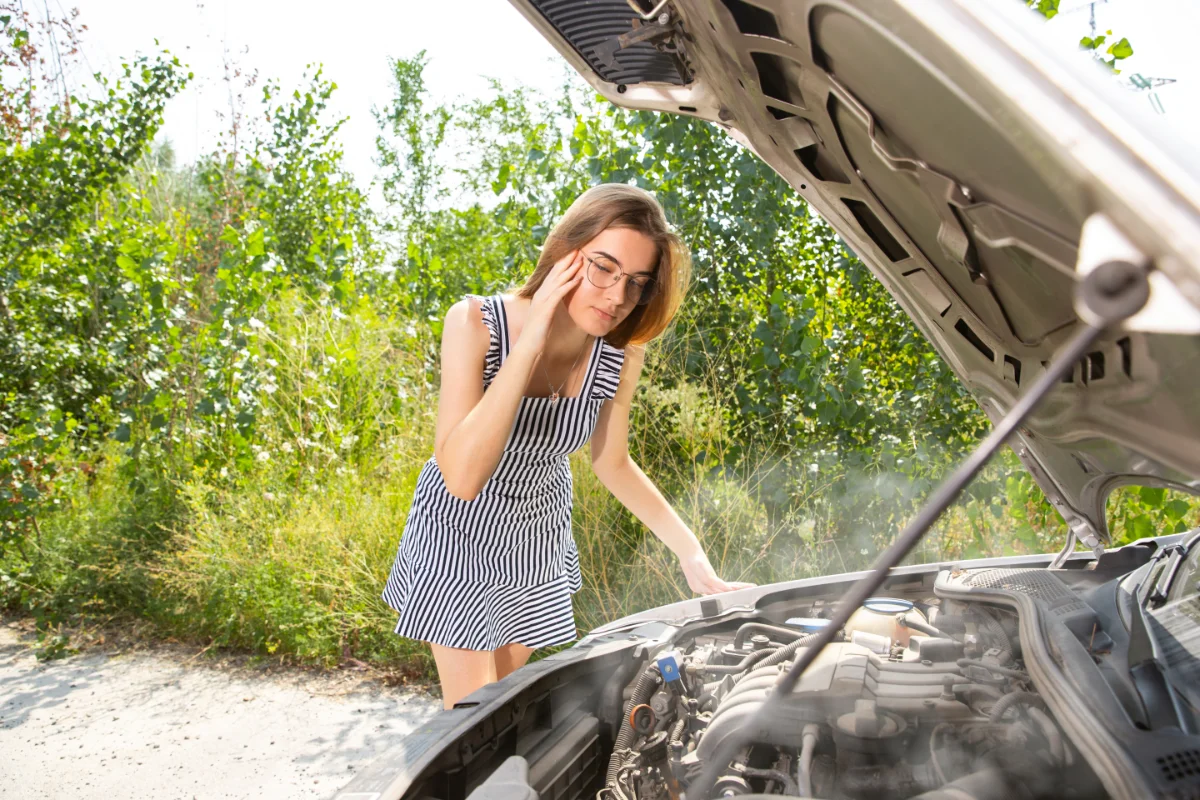
5 Common Car Problems and How to Fix Them
No matter how expertly you pamper your car, troubles will pop up. From peculiar sounds to pesky warning lights, car issues can drive you mad—and drain your wallet. But fear not! Many of the most common vehicle hiccups can be identified and remedied at home with the right skills and tools.
In this car troubleshooting guide, we’ll explore five of the most common car problems and walk you through the steps to fix them yourself. Whether you’re dealing with a dead battery, poor engine performance, or squeaky brakes, this guide will help you save time and money by confidently tackling DIY car repairs.

1. Dead Battery
A dead battery is one of the most common car problems—and one of the easiest to fix. Batteries typically last 3 to 5 years, but extreme temperatures, leaving lights on, or electrical issues can shorten their lifespan.
Signs of a Dead Battery:
- Engine cranks slowly or not at all
- Dashboard lights flicker or don’t turn on
- Clicking sound when turning the ignition
- Headlights and interior lights appear dim
How to Fix It:
- Jump-Start the Battery
- Park a working car close to the one with the dead battery.
- Turn off both engines and connect the jumper cables:
- Red clamp to the positive terminal of the dead battery
- Red clamp to the positive terminal of the working battery
- Black clamp to the negative terminal of the working battery
- Black clamp to an unpainted metal surface on the dead car (not the battery)
- Start the working vehicle and let it run for a few minutes.
- Try starting the car with the dead battery.
- Once started, remove the cables in reverse order.
- Test the Battery
- Use a multimeter to check the battery’s voltage. A healthy battery should read between 12.4V and 12.7V when fully charged.
- If the battery isn’t charged, it may need to be replaced.
Preventative Tips:
- Clean battery terminals regularly to prevent corrosion.
- Test your battery’s health every six months.
- Avoid leaving lights or electronics on when the engine is off.

2. Flat Tyre
A flat or underinflated tyre can leave you stranded, increasing the risk of a blowout while driving. Knowing how to change a tyre is a crucial skill for any driver.
Signs of a Flat Tyre:
- A car pulls to one side while driving
- Thumping or flapping sound
- Vibration through the steering wheel
- Tyre pressure warning light on the dashboard
How to Fix It:
- Pull Over Safely
- Park on a flat surface and engage the parking brake.
- Turn on hazard lights.
- Remove the Flat Tyre
- Use a jack to lift the car until the tyre is off the ground.
- Loosen the lug nuts using a lug wrench.
- Remove the tyre carefully.
- Install the Spare Tyre
- Position the spare tyre onto the wheel bolts.
- Hand-tighten the lug nuts.
- Lower the car and tighten the lug nuts in a star pattern.
- Check Tyre Pressure
- A tyre pressure gauge ensures the spare is inflated to the recommended pressure.
Preventative Tips:
- Check tyre pressure monthly.
- Rotate tyres every 5,000 to 7,500 miles.
- Keep a tyre repair kit or portable inflator in the car.

3. Overheating Engine
If not addressed immediately, an overheating engine can cause severe damage. Common causes include low coolant levels, a faulty thermostat, or a broken radiator.
Signs of an Overheating Engine:
- Temperature gauge in the red zone
- Steam or smoke coming from the bonnet
- Sweet smell (coolant leak)
- Engine knocking or loss of power
How to Fix It:
- Turn Off the Engine
- Pull over immediately and turn off the engine.
- Open the bonnet carefully (wait until it cools).
- Check Coolant Levels
- If the coolant reservoir is low, add a mixture of 50% coolant and 50% water.
- Do not open the radiator cap when the engine is hot — it can cause severe burns.
- Inspect for Leaks
- Look for visible leaks in the radiator, hoses, or water pump.
- If you find a leak, you may need to replace the damaged part or seal it temporarily with a leak-stopping product.
- Restart the Engine
- Start the engine and monitor the temperature gauge.
- If the problem persists, seek professional help.
Preventative Tips:
- Check coolant levels monthly.
- Replace the radiator cap and hoses as recommended in the owner’s manual.
- Flush the cooling system every 30,000 miles.
4. Brake Issues
Faulty brakes are a serious safety hazard and should be addressed immediately. Brake problems can stem from worn pads, low brake fluid, or damaged rotors.
Signs of Brake Problems:
- Squealing or grinding noise when braking
- Soft or spongy brake pedal
- A car pulls to one side when braking
- Burning smell after braking
How to Fix It:
- Check Brake Pads
- Remove the wheel and inspect the brake pads.
- If the pads are less than ¼ inch thick, replace them.
- Check Brake Fluid
- Open the brake fluid reservoir and check the level.
- Top up with the correct type of brake fluid (see the owner’s manual).
- If the fluid is dark or dirty, flush and replace it.
- Inspect Rotors
- Look for grooves, cracks, or uneven wear on the rotors.
- Resurface or replace rotors if they are damaged.
Preventative Tips:
- Replace brake pads every 20,000 to 40,000 miles.
- Flush brake fluid every 2 years.
- Have your brakes inspected annually.
5. Check Engine Light
The check engine light can signal anything from a loose fuel cap to a serious engine problem. While it’s tempting to ignore it, diagnosing the issue early can prevent more severe damage.
Common Causes of a Check Engine Light:
- Loose or faulty fuel cap
- Failing oxygen sensor
- Faulty catalytic converter
- Misfiring engine
How to Fix It:
- Use an OBD-II Scanner
- Plug the scanner into the diagnostic port under the dashboard.
- Read the error code and consult the manual for diagnosis.
- Address the Problem
- If the fuel cap is loose, tighten it.
- If the oxygen sensor or catalytic converter is failing, consider replacing it.
- If the issue persists, seek a professional diagnosis.
Preventative Tips:
- Inspect the fuel cap regularly.
- Replace the oxygen sensor every 60,000 to 100,000 miles.
- Keep up with routine engine maintenance.
Troubleshoot & Fix: Solve Common Car Problems with Confidence!
Car troubles can feel daunting, but fear not—the fix may be simple. You can take the wheel with the right mindset and our handy car troubleshooting guide. Tackling these DIY car repairs yourself not only saves you cash, it breathes new life into your ride. So buckle up, arm yourself with knowledge, and drive away in confidence! Check this car maintenance checklist to save yourself
Whether it’s a battery that won’t budge, an engine running hot, or pesky brake problems, mastering common vehicle conundrums gives you the driver’s seat advantage. Craving more car care wisdom or expert insights? Drop a comment or contact us — we’re here to steer you right!


